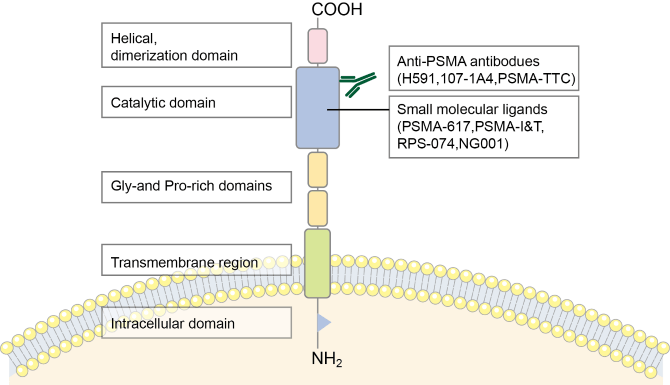Prostate cancer (PC) is one of the most common malignant tumors in men. The prevalence of PC varies worldwide, with PC being the second most common cancer in men in Europe and the United States, and relatively low in East Asia, North Africa, and the Middle East. In 2020, approximately 1.4 million men worldwide suffered from PCs. In addition, the number of men affected by PC worldwide is expected to gradually increase to 2.3 million cases by 2040. PC is usually asymptomatic without any specific treatment options, but a significant proportion (30%) of patients develop metastases of varying severity, eventually leading to severe morbidity and even death.
Specifically, metastatic castration-resistant prostate cancer (mCRPC) is a fatal form of prostate cancer with more cases of metastasis in the body, especially in the bone. To date, the major challenge in mCRPC therapy has been the difficulty in completely eradicating cancer cells. In recent years, radionuclide diagnosis and targeted therapy (TRT) methods have made significant progress in mCRPC. High-affinity ligands for over-expressed markers in cancerous tissues (e.g., PSMA-617) can be combined with positron nuclides (e.g., 68Ga, 44Sc, or 152Tb) for diagnostic imaging and with nuclides such as 177Lu or 225Ac for treatment of previously staged lesions, enabling personalized and precise treatment.

The prostate-specific membrane antigen (PSMA) is a transmembrane glycoprotein, approximately 100kDa, having folate hydrolase, carboxypeptidase, and internalization activities. It contains a transmembrane region of 24 amino acids, an N-terminal cytoplasmic sequence of 19 amino acids and a large extracellular region of 707 amino acids. The extracellular domain of PSMA is highly glycosylated, and glycosylation is required for enzymatic activity. PSMA expression was low in normal prostate tissue, kidney, duodenum, salivary gland, lacrimal gland, brain, and intestine, but increased in prostate cancer. PSMA high expression is associated with prostate growth and significantly correlated with the differentiation degree and progression of mCRPC.
The extracellular domain accounts for 95% of PSMA, providing an accessible target for small molecules, antibodies, and fragments thereof. We are developing a range of PSMA targeted small molecules (also known as ligands or inhibitors) and antibodies for molecular imaging and therapy by SPECT, PET, or TRT. Among them, PSMA-U033 under our research exhibits great potential.
225Ac-PSMA-U033
68Ga-PSMA-U033